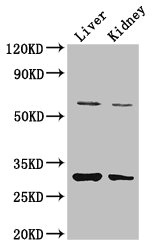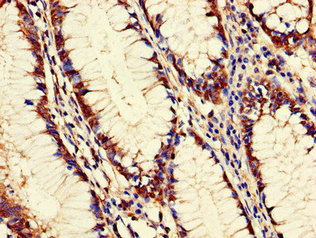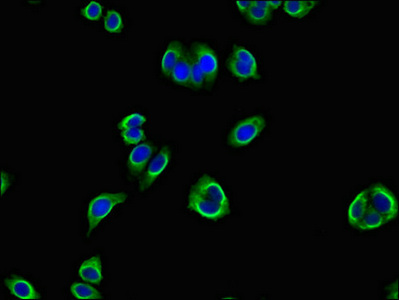Full Product Name
Rabbit anti-Homo sapiens (Human) PANK2 Polyclonal antibody
Alternative Names
4933409I19Rik antibody; AI642621 antibody; C20orf48 antibody; Hallervorden Spatz syndrome antibody; HARP antibody; hPANK2 antibody; HSS antibody; MGC118448 antibody; MGC15053 antibody; mitochondrial antibody; NBIA1 antibody; PANK2 antibody; PANK2_HUMAN antibody; Pantothenate kinase 2 (Hallervorden Spatz syndrome) antibody; Pantothenate kinase 2 antibody; Pantothenate kinase 2 mitochondrial antibody; Pantothenic acid kinase 2 antibody; PKAN antibody; RP23 387C21.4 antibody
Species Reactivity
Human, Mouse
Immunogen
Recombinant Human Pantothenate kinase 2, mitochondrial protein (437-490AA)
Immunogen Species
Homo sapiens (Human)
Conjugate
Non-conjugated
The PANK2 Antibody (Product code: CSB-PA874850LA01HU) is Non-conjugated. For PANK2 Antibody with conjugates, please check the following table.
Available Conjugates
| Conjugate |
Product Code |
Product Name |
Application |
| HRP |
CSB-PA874850LB01HU |
PANK2 Antibody, HRP conjugated |
ELISA |
| FITC |
CSB-PA874850LC01HU |
PANK2 Antibody, FITC conjugated |
|
| Biotin |
CSB-PA874850LD01HU |
PANK2 Antibody, Biotin conjugated |
ELISA |
Purification Method
>95%, Protein G purified
Concentration
It differs from different batches. Please contact us to confirm it.
Buffer
Preservative: 0.03% Proclin 300
Constituents: 50% Glycerol, 0.01M PBS, PH 7.4
Tested Applications
ELISA, WB, IHC, IF
Recommended Dilution
| Application |
Recommended Dilution |
| WB |
1:500-1:5000 |
| IHC |
1:20-1:200 |
| IF |
1:50-1:200 |
Storage
Upon receipt, store at -20°C or -80°C. Avoid repeated freeze.
Lead Time
Basically, we can dispatch the products out in 1-3 working days after receiving your orders. Delivery time maybe differs from different purchasing way or location, please kindly consult your local distributors for specific delivery time.
Usage
For Research Use Only. Not for use in diagnostic or therapeutic procedures.









